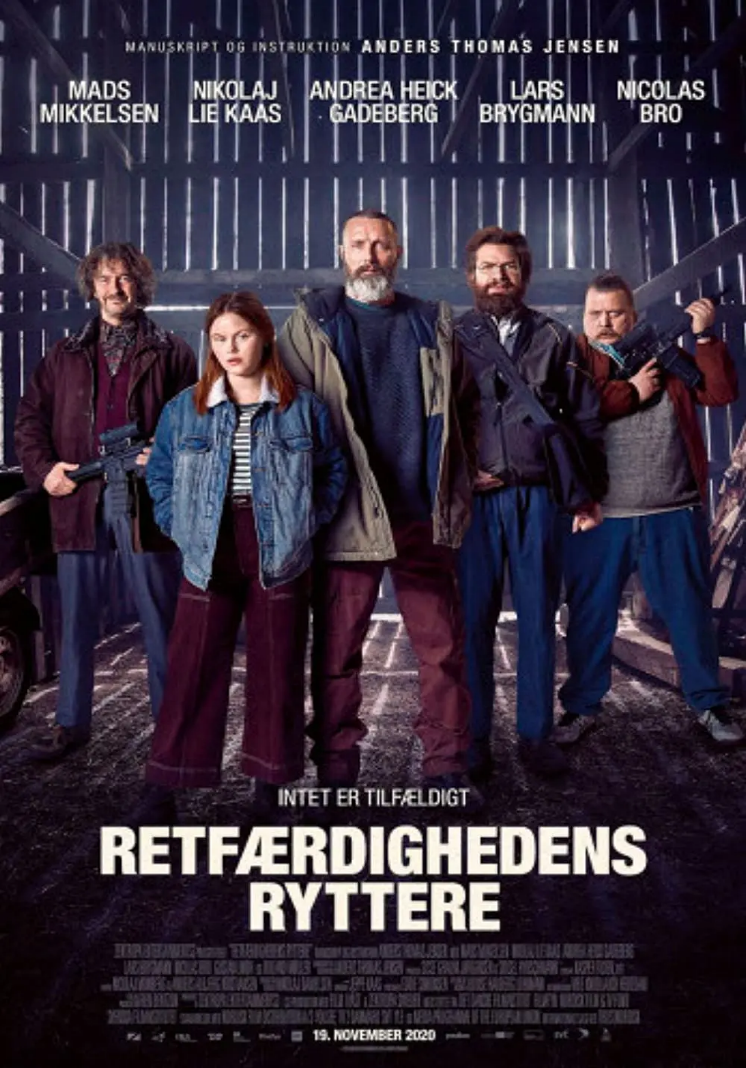Grans Allegorical writing on social issues

Translation first published in Iris.As the heroine of Ali Abbasi’s second feature film, “Border,” Tina seems a bit odd: the angular face, sunken eye sockets, and smoothed teeth that have caused so much vitriol from strangers. She is a customs officer working in a remote forested region of Sweden, and she possesses an X-Men-esque superpower that allows her to sniff out the intentions of others with her nose – a gift that is priceless for customs security work; but like all those strange abilities in movies, it creates a sense of alienation from others feeling. Tina eventually discovers that it’s all about who she really is – she’s actually a mountain spirit. She is one of the only remaining descendants of this supernatural race, who were persecuted and slaughtered by humans decades ago.
The film’s highly ambitious choice of subject matter constitutes an allegorical writing on social and cultural issues of recent years, touching on the oppression of immigrants, and the exclusion of racial and sexual minorities. However, “Border” does not flow into contrived symbolism or direct commentary on political issues. It portrays the particular, moving and intimate experience of drifting between the borders of society, between different people – it also reaches into the hearts of those who come from a lost land and evokes that sense of dread. (“I don’t like people who can’t express themselves without metaphor,” Abbasi said in a recent Film Comment interview, emphasizing that the film is “the story of a lonely, love-seeking woman who just happens to have a great sense of smell.) It’s a difficult film to categorize, combining mythic fantasy, love story and crime genre characteristics. Frontier is perhaps more of a cool movie: especially when we look at the way it deals with desire. The film sees desire as some kind of cosmic force that awakens Tina to her true self.
Border begins with scenes from Tina’s daily life: an uninteresting, programmed life where even the most amazing part of her life – her superhuman sense of smell – is only praised as some kind of ‘metal detector’. She stands in her uniform in the sterile lanes of customs. Her nose twitches as she sniffs the scents of passing passengers. First, she spotted an underage drunk, then a well-dressed child pornography smuggler. Later, she returns home, where we see her hangdog, loafer boyfriend Roland (a silly character played by Jorgen Tolson). She also makes regular visits to a nursing home to do her part, visiting her nearly senile father. In their gentle exchanges, we gradually feel the underlying melancholy: perhaps she is gradually losing the old man, who may be the only person in the world who truly loves her.
In this “normality” of Tina’s, we can recognize a certain unnatural and repressed feeling. In a way, those who do not belong to a certain culture, but have to force themselves to live in it, may be familiar with this feeling. Thanks to Melander’s insightful and brilliant performance, which empathizes with everything that lies within this character, Tina is like a restless, silent observer of the world as she ekes out a living. She is never satisfied, but cannot know what she is missing. The only moment she reveals her vitality is when she stumbles upon that natural field. In that scene, photographer Nadim Carlson creates a vibrant, aesthetically pleasing combination of colors and image textures. Tina is standing somewhere outside her cabin, peeking inside her house like a visitor, when a giant moose appears silently over her shoulder. Then, she suddenly woke up in the middle of the night. Outside the frosty window of her bedroom, a fox is sharing this warm, quirky moment with her. In these scenes, Abbasi and Carlsen are in the forests of northern Europe, mining their folk myths. We see forms of things emerge from the shadows and eventually fade back into the darkness.
Tina cautiously embraces the encounters, but they do, after all, seem like alienations of their own – until one day, while working at customs, she meets Vol (Eero Milonov), whose face looks like it shares many of the same features as hers. His arrival visibly disrupts Tina’s life; her olfactory superpowers channel her into an extreme frenzy of emotions, and Melander is framed in a penetrating close-up. Suddenly startled and awakened, Tina decides to probe further, and she discovers even more commonalities between them: androgynous sex organs; a scar above the buttocks; burn marks from being struck by lightning. “Who are you?” she asked. This quietly became a prelude to her other question thereafter: “Who am I?”
Their ensuing romance inherits the basic structure of many coming-of-age movies – cool or otherwise: Val is a carefree but uncanny lover who pulls the still-shy, untouched Tina out of her safety zone, allowing her to get to know herself. But Abbasi’s attention to fictional detail, and of course Melander and Milonov’s between-human and non-human looks, make the scenes between these two characters particularly fascinating and highly original. Their initial communication is through the sense of smell, a quiet descent into ecstasy; like animals, they ‘examine’ each other with their noses, cautiously approaching each other. Slowly, Val gradually draws Tina into her natural urges. He starts by giving her maggots to eat. (“It’s disgusting,” she said, “who said that?” he said contemptuously.) Soon after, they were huddled together under a table during a thunderstorm, their limbs intertwined, trying to escape the lightning that chased them. Soon they were enjoying passionate and wild sex in the forest.
That sex scene was widely discussed after the film’s premiere at Cannes. It was the climactic scene of “Frontier”: a moment of pure, apocalyptic pleasure that succeeded in awakening Tina’s identification with her body and her desires. It is likewise beyond the norm, as we see oil-painted nudity and frequent hisses and grunts. This is yet another example as Abbasi shapes his ‘othered’ characters: instead of anthropomorphizing the sex between them, he tries a more authentic approach, reconstructing our usual imagery of ‘monsters’ and pornography. Once again, Melander and Milonov play off the essence of the scene; they show animalistic desire, rather than drifting into parody or appealing to sympathy.
The Border is based on a novel by John Aveyard Lindquist, the author of another famous story, the teenage vampire cult film “The Strangers” (2008). Like “No Country for Life,” “Border” delves into some truly dark territory, containing a (somewhat unnatural) crime subplot. This makes the mystery of the film’s identity even more confusing, and creates a better, more exciting story to watch. Even after we discover Tina’s true identity, she still faces a deeper question, which is still the question of “who she really is” – and who she wants to be. “I don’t want to hurt people. Is that like being human?” she says to Wall at the end of the film. Abbasi seems to suggest that the proposition of identity is much more complex than a mere question of gender, of genetics. And the boundaries we set for ourselves are sometimes more important than our true traits.




